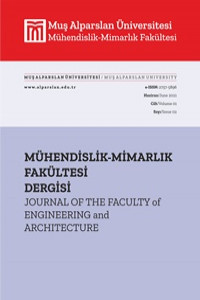Electrode Array Position Guiding in Cochlea Based on Impedance Variation: Computational Study
The electro anatomy of the cochlea plays a crucial role in hearing, where damage to the cochlea may cause hearing loss. Cochlear neuromodulators provide hearing to severe or profound hearing-impaired individuals. The accurate insertion of electrodes into the cochlea is an important factor. If misplaced it may lead to further damage (insertion trauma). Visual inspection of the electrode insertion is limited and relies on the experience of the surgeon. Assisted real time guidance in positioning the electrode array in the cochlea during insertion is needed. Its position can be identified based on the variation in the impedances of electrodes which can be rapidly assessed and interpreted. Using an advanced computational model of the cochlea which accounted for different tissue layers in the cochlea, impedance variations and electrical potentials at different electrode distances from the cochlear wall were simulated, which suggest that the variations in impedance can be used to detect the proximity of the electrodes to the cochlea wall.
Anahtar Kelimeler:
Cochlear Implant, Computational Models, Electrical Stimulation, Electrode Proximity, Impedance Measurement
Electrode Array Position Guiding in Cochlea Based on Impedance Variation: Computational Study
Keywords:
Cochlear implant,
___
- A. Dhanasingh and C. Jolly, “An overview of cochlear implant electrode array designs,” Hear.Res., vol. 356, pp. 93–103, 2017.
- K. Dang, “Electrical conduction models for cochlear implant stimulation,” 2017.
- L. K. Holden et al., “Factors affecting open-set word recognition in adults with cochlear implants,” vol. 34, no. 3, pp. 342–360, 2014.
- K. S. Min, S. B. Jun, Y. S. Lim, S. I. Park, and S. J. Kim, “Modiolus-hugging intracochlear electrode array with shape memory alloy,” Comput. Math. Methods Med., vol. 2013, 2013.
- T. H. and J. J. H. T. K. Malherbe, “Constructing a three- dimensional electrical model of a living cochlear implant user’s cochlea,” Training, vol. 4179, no. December 2015, p. 53, 2016.
- J. H. M. Frijns, J. J. Briaire, and J. J. Grote, “The importance of human cochlear anatomy for the results of modiolus-hugging multichannel cochlear implants,” Otol. Neurotol., vol. 22, no. 3, pp. 340–349, 2001.
- C. K. Giardina, E. S. Krause, K. Koka, and D. C. Fitzpatrick, “Impedance measures during invitro cochlear implantation predict array positioning,” IEEE Trans. Biomed. Eng., vol. 65, no. 2, pp. 327–335, 2018.
- E. Salkim, A. Shiraz, and A. Demosthenous, “Impact of neuroanatomical variations and electrode orientation on stimulus current in a device for migraine: a computational study,” JNeural Eng., vol. 17, no. 1, p. 016006, 2019.
- E. Salkim, A. Shiraz, and A. Demosthenous, “Influence of cellular structures of skin on fiber activation thresholds and computation cost In fl uence of cellular structures of skin on fi ber activation thresholds and computation cost,” Biomed. Phys. Eng. Express, vol. 5, no. 1, p. 015015, 2018.
- N. Gerber et al., “A multiscale imaging and modelling dataset of the human inner ear,” Sci. data, vol. 4, p. 170132, 2017.
- E. Avci, T. Nauwelaers, T. Lenarz, V. Hamacher, and A. Kral, “Variations in microanatomy of the human cochlea,” J. Comp. Neurol., vol. 522, no. 14, pp. 3245–3261, 2014.
- E. Salkim, M. Zamani, and A. Demosthenous, “Detection of Electrode Proximity to the Cochlea Wall Based on Impedance Variation: a Preliminary Computational Study,” Int. J. Simul. Syst. Sci. Technol., vol. c, pp. 2–5, 2020.
- E. Erixon, H. Högstorp, K. Wadin, and H. Rask-Andersen, “Variational anatomy of the human cochlea: Implications for cochlear implantation,” Otol. Neurotol., vol. 30, no. 1, pp. 14– 22, 2009.
- P. Hasgall et al., “IT’IS Database for thermal and electromagnetic parameters of biological tissues, Version 4.0,” IT’IS, 01- Jan-2012. .
- R. V Shannon, “A Model of Safe Levels for Electrical Stimulation,” IEEE T Bio-Med Eng, vol. 39, no. 4, pp. 424–426, 1992.
- T. Hanekom and J. J. Hanekom, “Three-dimensional models of cochlear implants: A review their development and how they could support management and maintenance of cochlear implant performance,” Network: Computation in Neural Systems, vol. 27, no. 2–3. pp. 67–106, 2016.
- J. Pile, A. D. Sweeney, S. Kumar, N. Simaan, and G. B. Wanna, “Detection of modiolar proximity through bipolar impedance measurements,” Laryngoscope, vol. 127, no. 6, pp. 1413–1419, 2017.
- C. C. Finley and M. W. White, “Models of Neural Responsiveness to Electrical Stimulation,” Springer- Verlag, 1990, pp. 55–99.
- J. H. M. Frijns, S. L. de Snoo, and R. Schoonhoven, “Potential distributions and neural excitation patterns in a rotationally symmetric model of the electrically stimulated cochlea,” Hear.Res., vol. 87, no. 1–2, pp. 170–186, 1995.
- Yayın Aralığı: Yılda 2 Sayı
- Başlangıç: 2020
- Yayıncı: Muş Alparslan Üniversitesi
Sayıdaki Diğer Makaleler
Venturimetre İçerisinden Geçen Akışkanın Had Analizi
Metalik Biyomalzemelerin Elektro Erozyon Yöntemiyle İşlenebilirliklerinin Araştırılması
Ulaş ÇAYDAŞ, Dilek YILMAZ, Hakan GÜRÜN, Uğur KÖKLÜ
Minimum Baskın Küme Problemini Polinomsal Yöntemle Çözme
Bulut Bilişim’de Çok Amaçlı Optimizasyon Tabanlı Görev Planlama Mekanizmalarının İncelenmesi
Electrode Array Position Guiding in Cochlea Based on Impedance Variation: Computational Study
Çizgelerde Yapısal Karmaşıklığın Ölçülmesinde Farklı Parametrelerin Kullanımı
Hidrodinamik Radyal Kaymalı Yataklarda Basınç Dağılımının İncelenmesi
